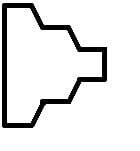Solcar
10 kW
I'm glad that you mentioned the DayGlo Avenger in another thread. I didn't want to go off topic on that thread but thought you wouldn't mind me going off on a tangent here. In a similar way to how you are working with planetary gearing, I'm wondering if a viable way to do friction drive will be to do some extra speed reduction so that a larger drive wheel can be used to engage the tire.
I have been thinking that because the assembly will not only be spinning faster and be doing it more often, to keep it quieter, belts are a good way to consider. I am still experimenting with friction drive because that leverage bonus available at the wheel periphery is very attractive.
edit: replaced "torque" with "leverage" in above sentence.
I have been thinking that because the assembly will not only be spinning faster and be doing it more often, to keep it quieter, belts are a good way to consider. I am still experimenting with friction drive because that leverage bonus available at the wheel periphery is very attractive.
edit: replaced "torque" with "leverage" in above sentence.


